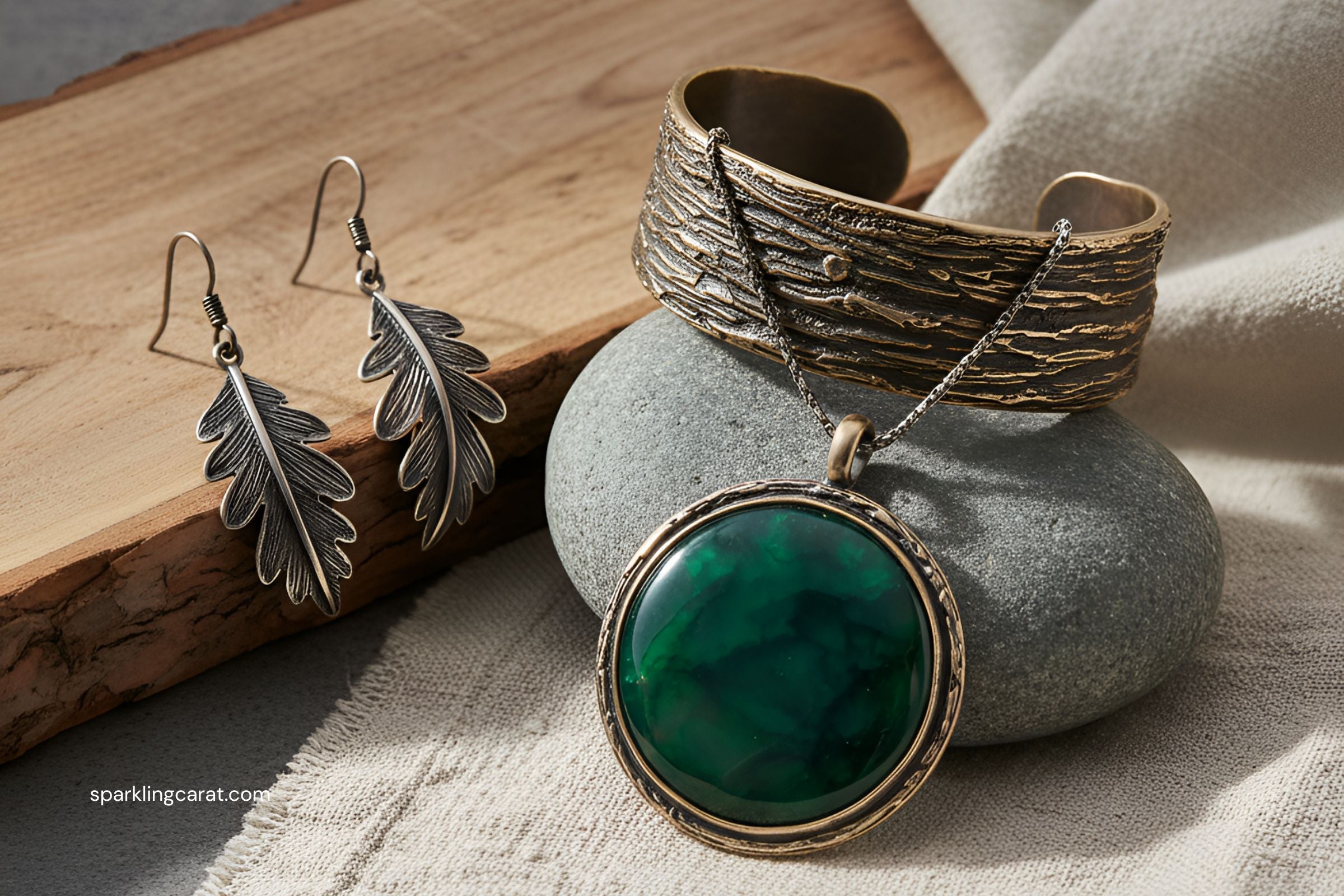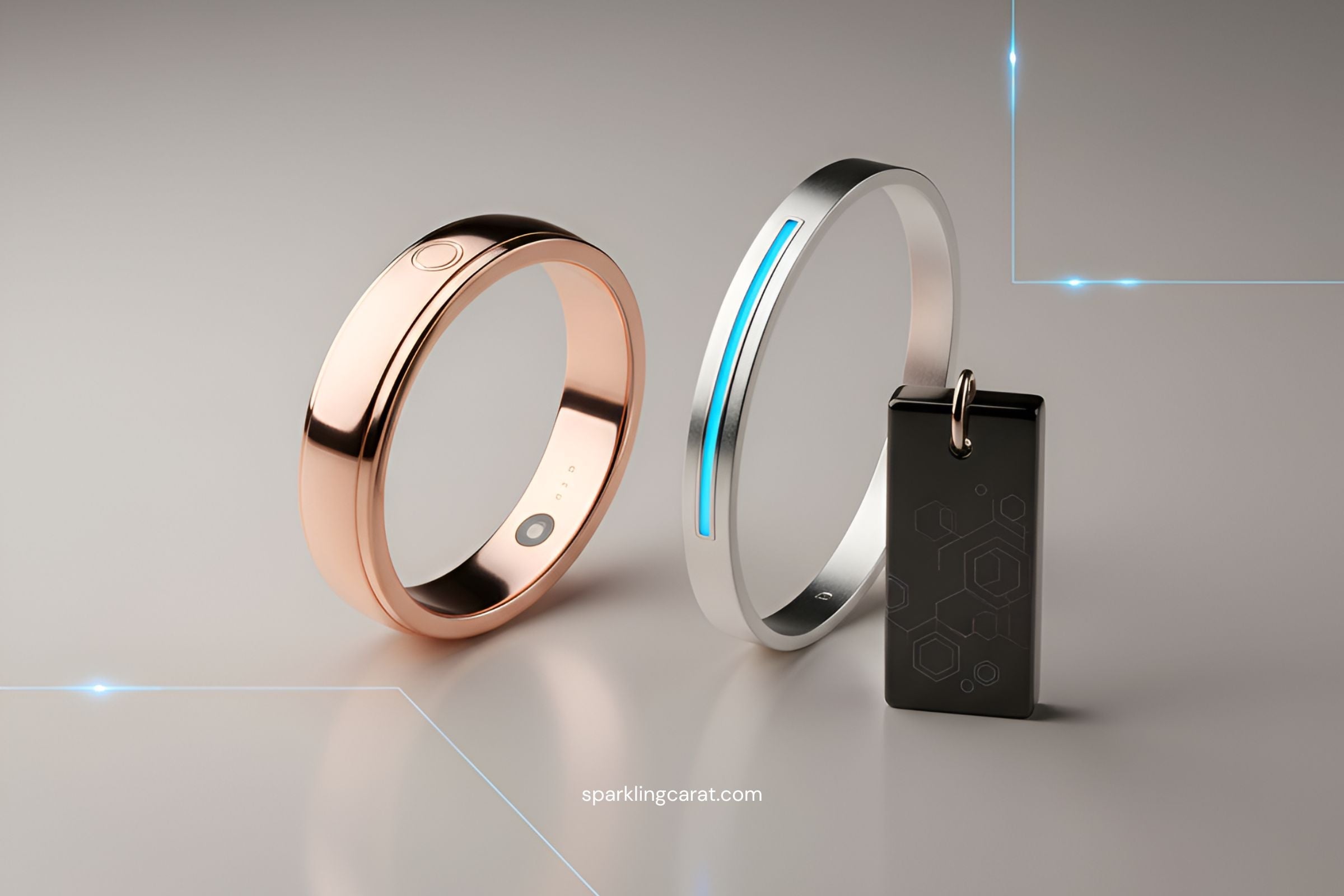Sustainable Jewelry Spotlight: Recycled Metals & Fair-Trade Sourcing
Sustainability has moved from a niche talking point to a central pillar of the jewelry industry. In 2025, shoppers are demanding transparency: where do materials come from, how are workers treated, and what impact does each purchase have on the environment? Two practices, recycled metals and fair-trade sourcing, have emerged as leading ways brands are answering those questions.
This in-depth guide explores how recycled gold, silver, and platinum reduce mining impact, and how fair-trade sourcing empowers mining communities and ensures ethical labor. We’ll also share practical tips on how to identify authentic sustainable jewelry, what certifications to look for, and how to style these pieces to align with your values. Finally, we’ll connect these ideas to other jewelry trends, like Eco-Friendly Jewelry Storage & Display Tips and Nature-Inspired Jewelry: Organic Textures, Leaf Motifs & Earth Tones, so your entire collection reflects both style and conscience.
Why Sustainability Matters in Jewelry
-
Mining’s environmental footprint: Traditional mining for gold, silver, and gemstones consumes large amounts of energy and water, while generating toxic byproducts like mercury and cyanide.
-
Labor and human rights issues: Many mines in developing countries lack fair wages, safe conditions, or protections against child labor.
-
Consumer awareness: Social media, investigative journalism, and certification bodies have raised awareness. Millennials and Gen Z are especially concerned with the origin of their products.
-
Brand differentiation: Ethical practices are now a competitive advantage. Brands like Catbird NYC, Monica Vinader, and Chopard have gained loyal followings by publicizing their recycled metals and fair-trade practices.
Recycled Metals Explained
What Are Recycled Metals?
Recycled metals come from old jewelry, industrial scrap, or electronic waste that’s refined back to its pure state. The end product, whether gold, silver, or platinum, is chemically identical to freshly mined metal but carries a far smaller environmental impact.
Benefits:
-
Reduces the need for new mining, conserving natural resources.
-
Cuts greenhouse gas emissions and chemical waste.
-
Often cheaper for brands, making sustainable jewelry more accessible.
How It Works:
Old pieces are melted down, refined, and recast into new wire, sheet, or castings. Specialized refiners supply recycled precious metal to jewelers.
Certifications to Look For:
-
SCS Recycled Content Certification – verifies recycled content.
-
Responsible Jewellery Council (RJC) Chain of Custody certification.
Styling Tip:
Because recycled metal is chemically identical to mined metal, you can mix it with any piece in your collection. Combine recycled-gold hoops with a Mixed Metal Magic: How 2025 Is Breaking Jewelry Rules stack for a trend-forward yet responsible look.
Fair-Trade Sourcing for Gemstones & Gold
Defining Fair-Trade Jewelry
Fair-trade sourcing ensures that miners and cutters receive fair wages, work in safe conditions, and follow environmental standards. For gold, the Fairtrade Gold Standard sets criteria for small-scale mining communities. For gemstones, initiatives like Fairmined and the Gemstones and Jewellery Community Platform are growing.
Benefits:
-
Ensures ethical labor and community development.
-
Reduces harmful environmental practices (e.g., mercury use).
-
Gives traceability from mine to market.
Certifications & Programs:
-
Fairtrade Gold (UK-based): Gold mined under strict social, environmental, and economic standards.
-
Fairmined (Alliance for Responsible Mining): Assures responsible small-scale gold mining.
-
Colored Gemstone Initiatives: Ethical sourcing frameworks for gems such as sapphires and spinels.
Styling Tip:
Highlight the story behind the piece. When someone compliments your necklace, mention that its gold is Fairmined or its sapphires are traceable to a specific cooperative. This turns your accessory into a conversation piece and elevates its emotional value.
How to Identify Truly Sustainable Jewelry
-
Ask for Documentation: Reputable brands will show recycled-metal certificates or sourcing documentation.
-
Look for Third-Party Certification Marks: Fairtrade, Fairmined, RJC, SCS.
-
Read Transparency Reports: Brands like Mejuri and Brilliant Earth publish yearly sustainability reports.
-
Avoid “Greenwashing”: Terms like “eco gold” or “ethical” without evidence can be misleading.
-
Consider the Whole Supply Chain: Packaging, shipping practices, and repair/maintenance services are also part of sustainability.
Styling & Storing Your Sustainable Jewelry
-
Mix with other trends: Recycled-metal rings pair beautifully with Statement Jewelry in 2025: Oversized Earrings and Sculptural Rings to Watch.
-
Showcase responsibly: Use Eco-Friendly Jewelry Storage & Display Tips (internal link) to ensure your sustainable jewelry sits in equally sustainable storage, think FSC-certified wood boxes, linen pouches, or recycled glass displays.
-
Build a capsule collection: Start with everyday pieces, studs, stacking rings, bangles, then expand with statement fair-trade gemstones.
-
Repair and recycle: Extend life by repairing rather than replacing. Return worn pieces to brands that offer buy-back or recycling programs.
Brands Leading the Way
Examples include:
-
Catbird NYC – 100% recycled gold across collections.
-
Monica Vinader – recycled silver and gold vermeil.
-
Chopard – first major luxury brand to commit to 100% ethical gold.
-
Brilliant Earth – recycled metals plus ethically sourced gemstones.
Use these as benchmarks when vetting new brands or artisans. Many independent jewelers now advertise their use of recycled metals on Etsy and Instagram.
The Future of Sustainable Jewelry
Expect rapid growth in traceability technology (blockchain for supply chains), lab-grown colored gemstones, and consumer demand for full life-cycle accountability. By 2026, sustainability will no longer be a differentiator but an expectation. Early adopters, both brands and customers, will help set standards for quality, aesthetics, and ethics.
Conclusion
Sustainable jewelry, especially pieces crafted from recycled metals and fair-trade sources, offers a way to adorn yourself without compromising your values. With a bit of research and discernment, you can curate a collection that reflects both your style and your ethics. From everyday studs to heirloom-quality statement pieces, sustainability and beauty can go hand in hand.






Leave a comment
This site is protected by hCaptcha and the hCaptcha Privacy Policy and Terms of Service apply.